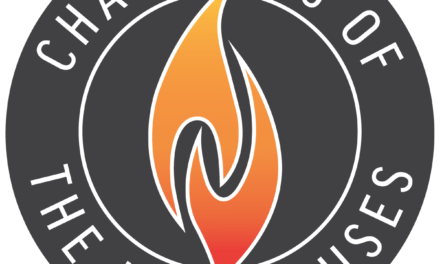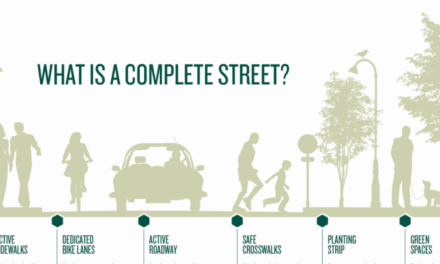It’s a shame that the Center City Commission could never get its “Light It Up” project off the ground. From Neal Peirce:
PHILADELPHIA – Paris has historically been the world’s celebrated “City of Light.” New York glitters in the dark, its Times Square literally drenched in light. Nighttime scenes glitter from London to San Francisco to Shanghai.
But Philadelphia, America’s birthplace city, now shines with an ingenious mix of lights designed to please and inspire residents and visitors alike. Center-city street lights have been rescaled for pedestrians’ pleasure and safety. Buildings and statuary along the grand Benjamin Franklin Parkway, stretching from City Hall to the Philadelphia Art Museum, are bathed in carefully crafted, state-of-the-art illumination.
And running south from City Hall, along South Broad, the city’s “Avenue of the Arts,” several theaters and private buildings are now illuminated every half hour each evening by ingeniously programmed LED lights. The form is far from static: the LEDs, their projections constantly shifting color and form, play on and celebrate the architectural features of each building, even while they’re coordinated with each other to create a single inspiring “show.”
The man chiefly responsible for this nighttime wonder is Paul Levy, founding chief executive of the Philadelphia’s Center City District. It’s the business improvement district for downtown, founded in 1991 and funded by mandatory property assessments on businesses. Back then, the center city was in sad shape: glass from broken car windows glittered in gutters, graffiti defaced buildings, crime was a serious concern and people complained of street dirt with winds throwing up virtual “trash storms.”
The district made a clean and safe, people-friendly downtown its top priority. It quickly deployed a 100-person corps to sweep and vacuum sidewalks, and it brought in several dozen “community service representatives” to walk the streets, provide escorts and help anyone in trouble.
One priority was street lighting, convincing the city to replace 30-foot-high “cobra-headed” fixtures designed for cars and so far apart they left pools of darkness between them. The substitute: slender, elegant 16-foot lampposts spaced just 60 feet apart, providing a uniform canopy of pleasing light to benefit pedestrians.
Today the district is far past what Levy calls the “City Drop Dead” era of the ’60s to ’80s. The downtown is thriving, with 40 million square feet of office space, 3,200-plus retail shops and 713 restaurants. There were no outdoor cafes in 1991; today there are 273. Center city population is up 27 percent since 1990. Young professionals have flooded in: preschools and kindergartens are overenrolled. Since 2000, 23,000 children have been born to center city parents.
Did advanced lighting “make” the plan for Center City Philadelphia rejuvenation? No – basic safety and order came first. But Paul Levy became intrigued with modern high-tech lighting. In 2004, City Hall was illuminated with lights from seven nearby buildings, and seasonally lit in bright holiday season colors. That year, Levy learned of techniques then virtually unknown in the United States, when he attended the world’s top city lighting event – the Lighting Community International conference in Lyon, France.
Soon after, he arranged for French lighting experts to counsel Philadelphia. To experiment and gain support, Terra Hall (University of the Arts) was fitted out with changeable LED lights in 2007. The lights dance in varied colors from one architectural feature to another, in tune with Beethoven’s Fifth Symphony. Photoshop software was used to show nearby building owners and managers how the LED lighting could be customized to celebrate their building facades. Big opening-night parties were held, one in 2008 as a dozen buildings lit up in a coordinated light show in tune with Tchaikovsky’s “Nutcracker Suite.”
Some criticism was heard, especially that the lights consume power (and thus add to global carbon emissions). Levy’s rejoinder: sustainability. LED lights are highly energy efficient; illuminating a good-sized building consumes no more power in an hour than a household clothes dryer.
But there’s a barrier: the Central City District has to “sell” building owners on being LED-lit. It’s not always easy: The owner has to bear most of the design and cost of installing the lights, plus paying for the power they consume. Landlords must also agree to outside control of just when the area’s buildings will be illuminated. Without the Central District’s years of working collaboratively with building owners, Levy notes, the coordination job might be undoable.
In addition, various arts, historic and street use permissions have to be obtained. It’s not like Europe, where most lighting is on public buildings and simply paid for, and managed by, city halls.
Still, the value to any city, in building its business identity – but even more in building residents’ appreciation and enjoyment, the feeling one lives in a special place – is hard to overestimate. The city is light, it’s animation, it’s dramatized, eye-catching architecture.
Simultaneously, it’s a show – and a place – for everyone.
Neal Peirce’s e-mail is npeirce@citistates.com.





Why not use the same ideas from the Crosstown Lights project for the buildings downtown? There are several pockets of darkness down there, and I think Main st should actually be lit up nightly(same way it is during December).